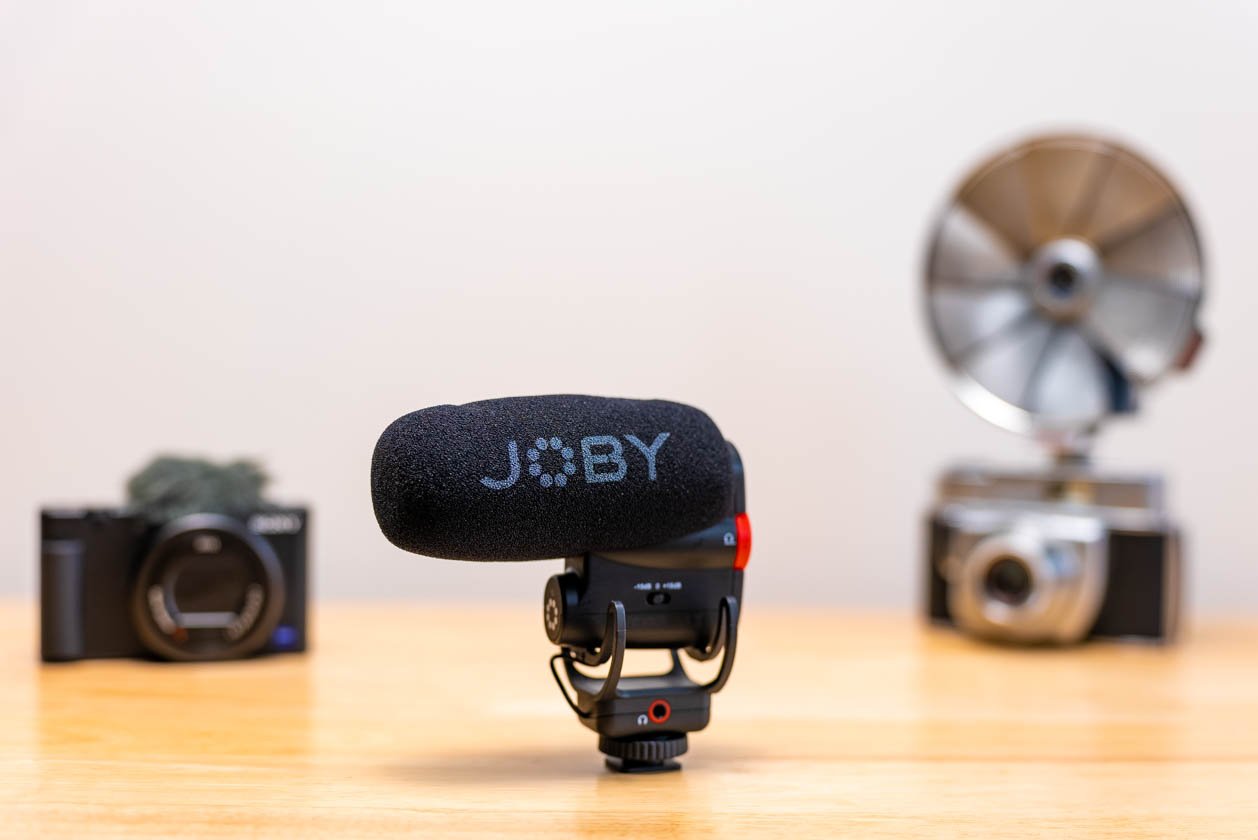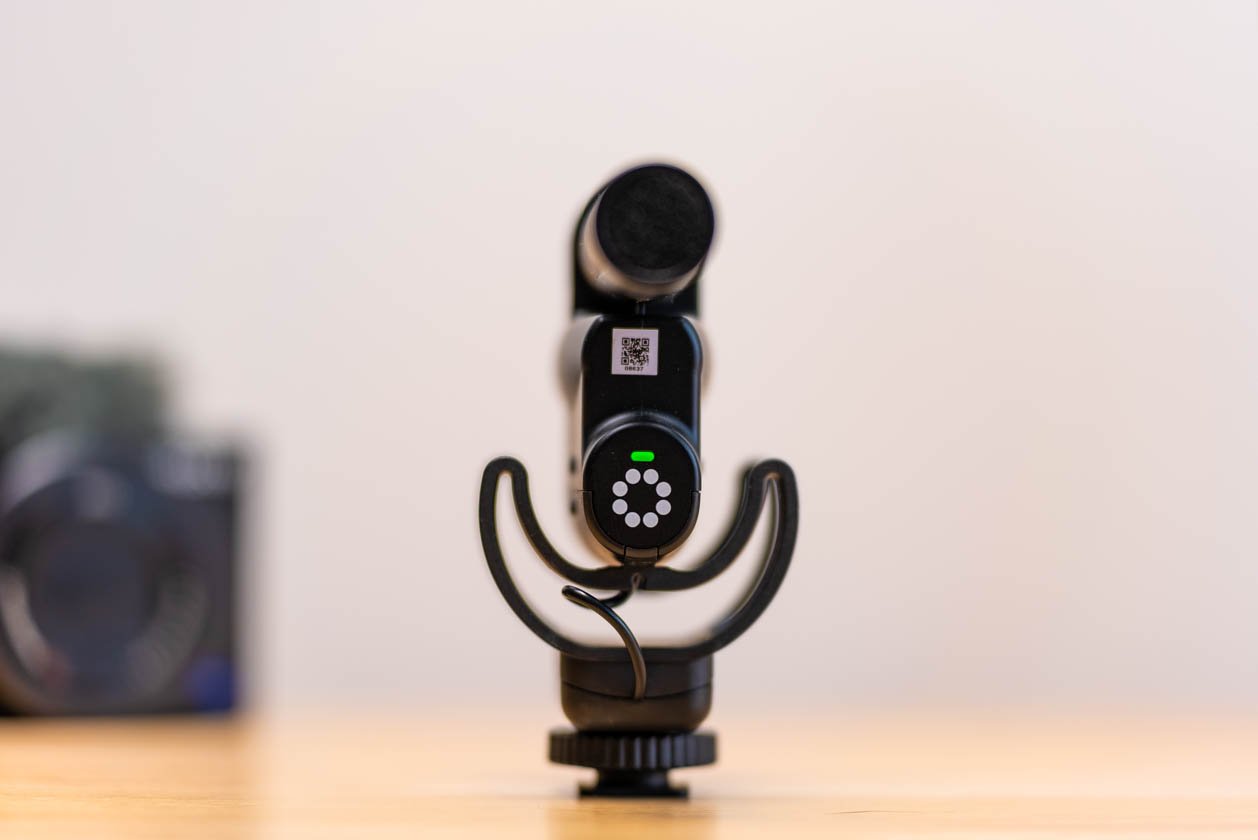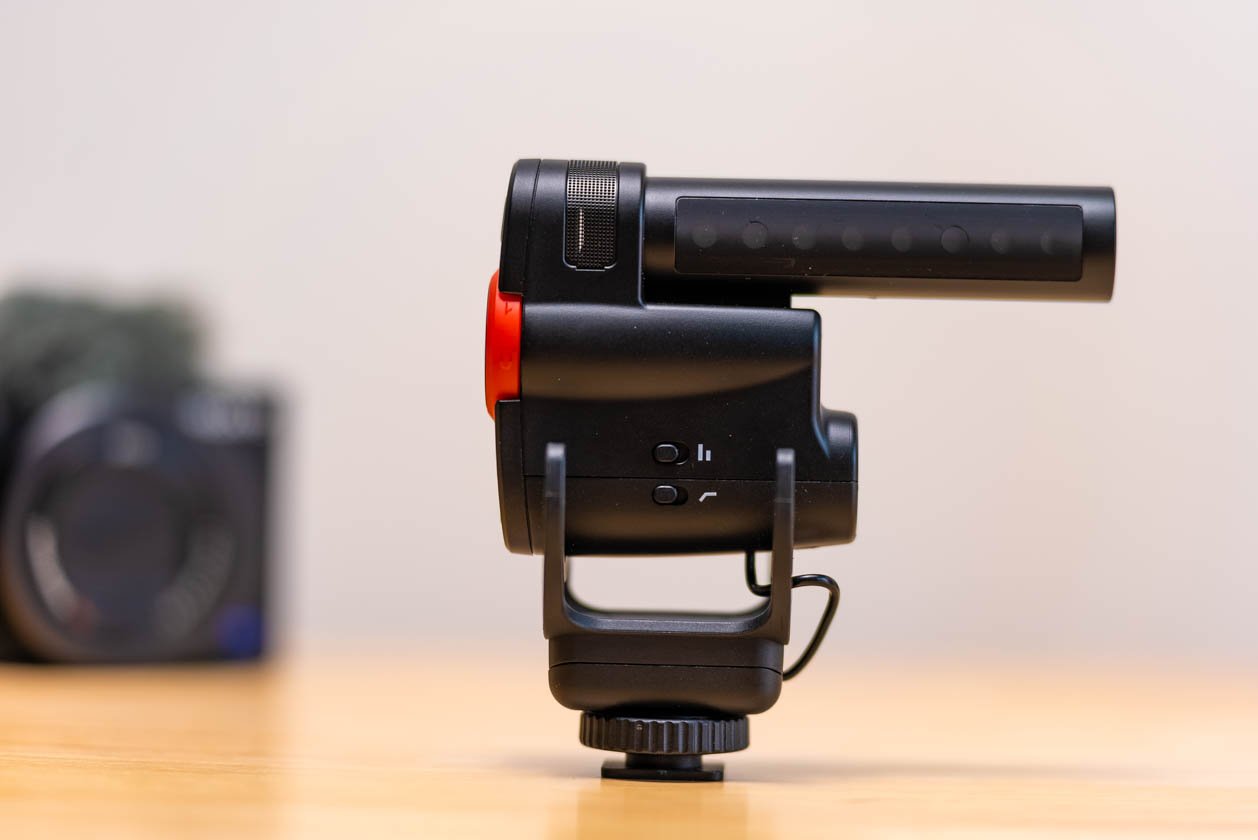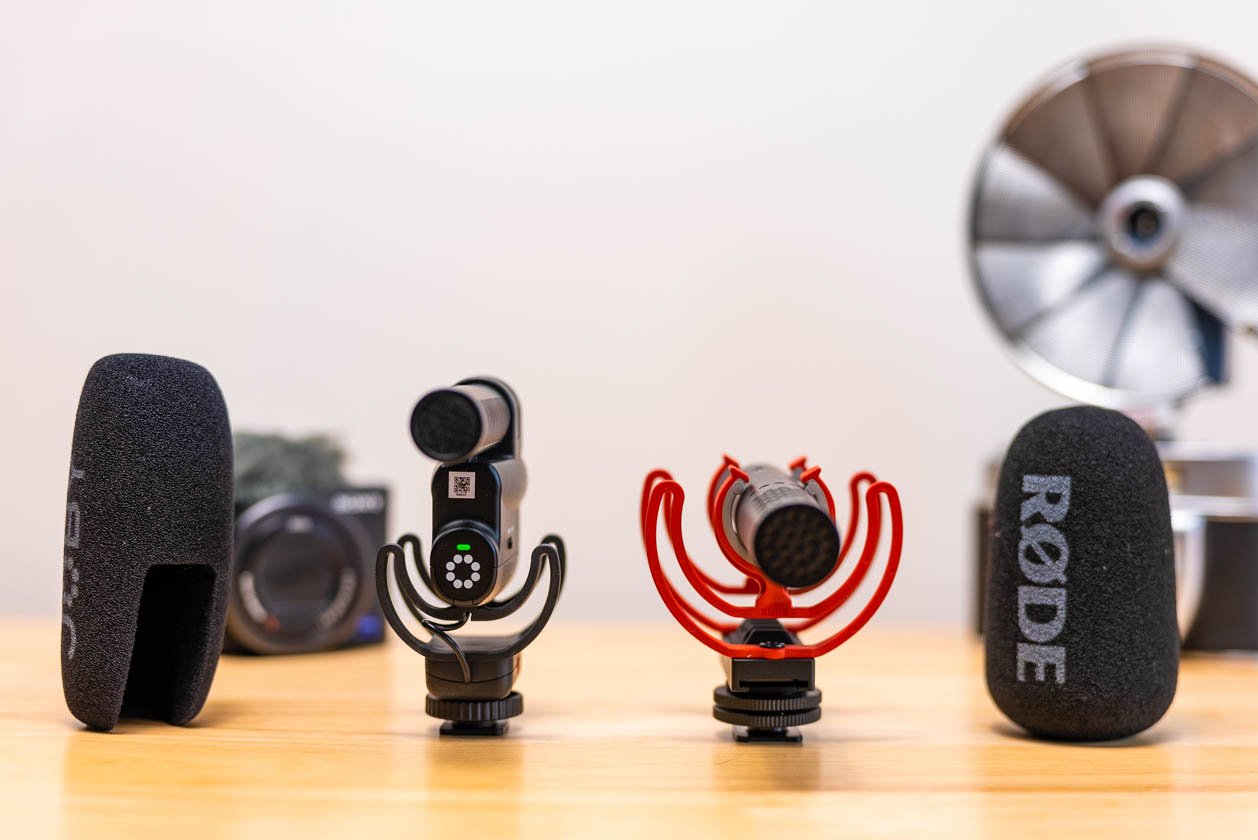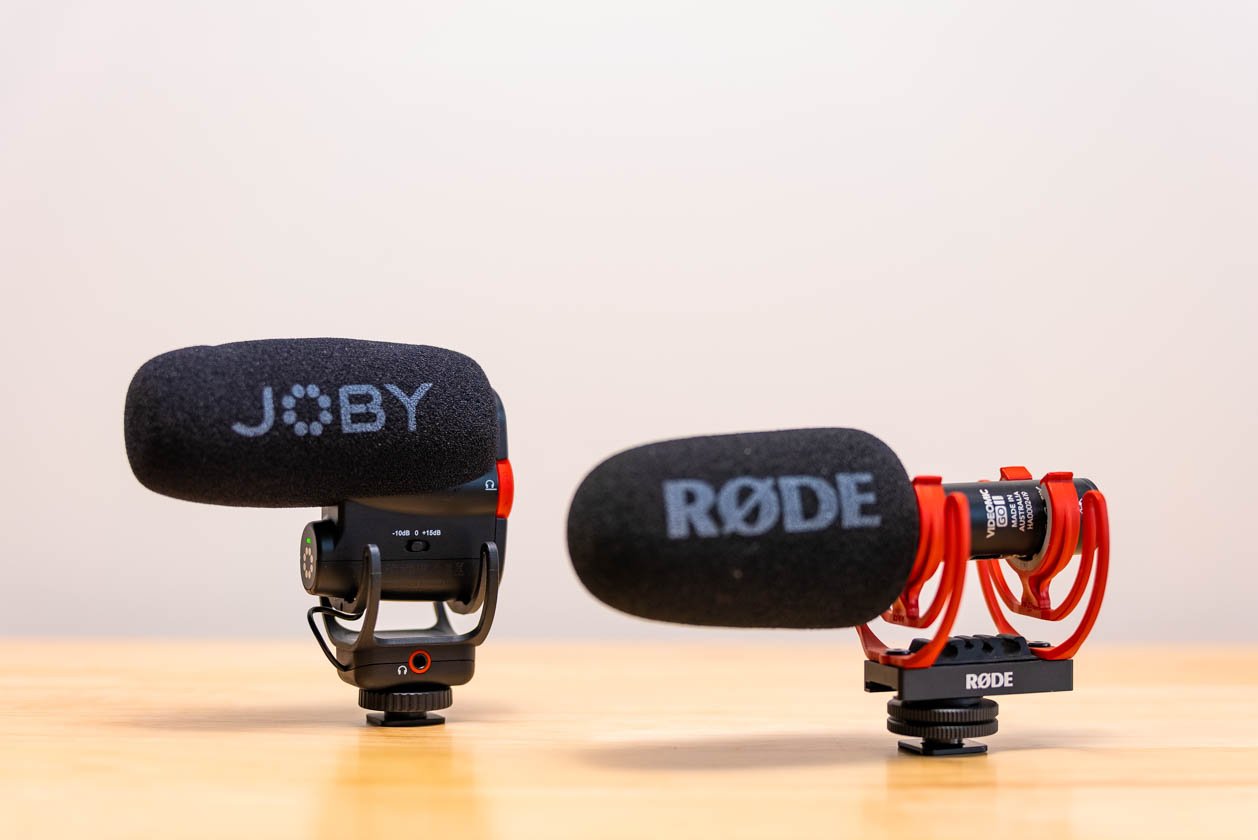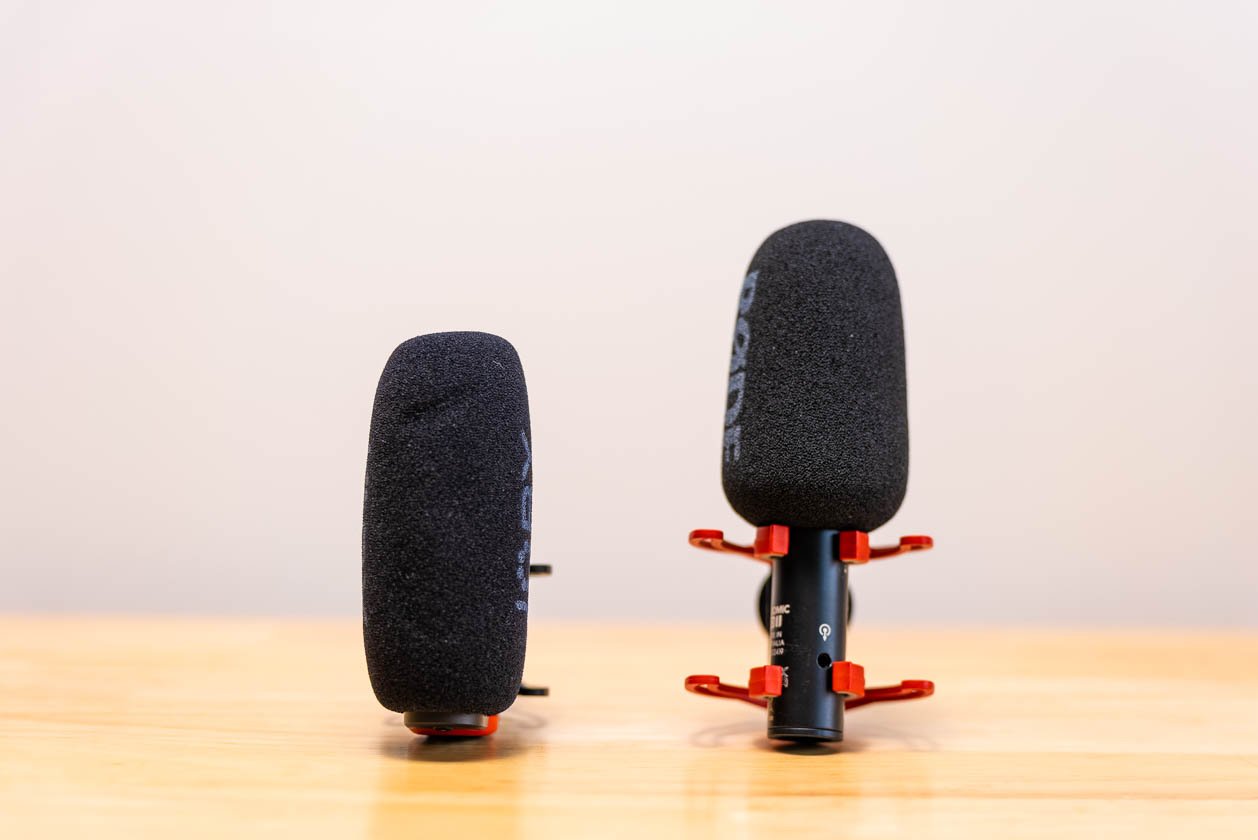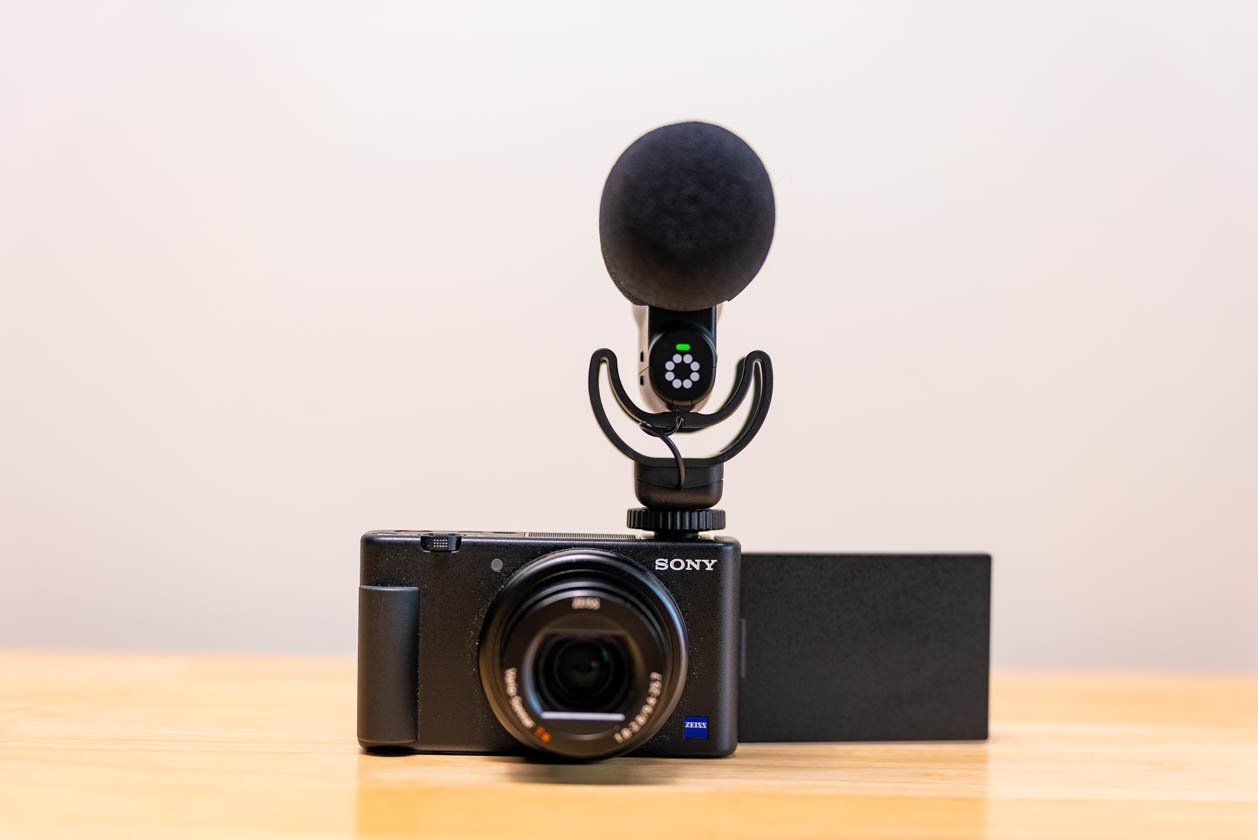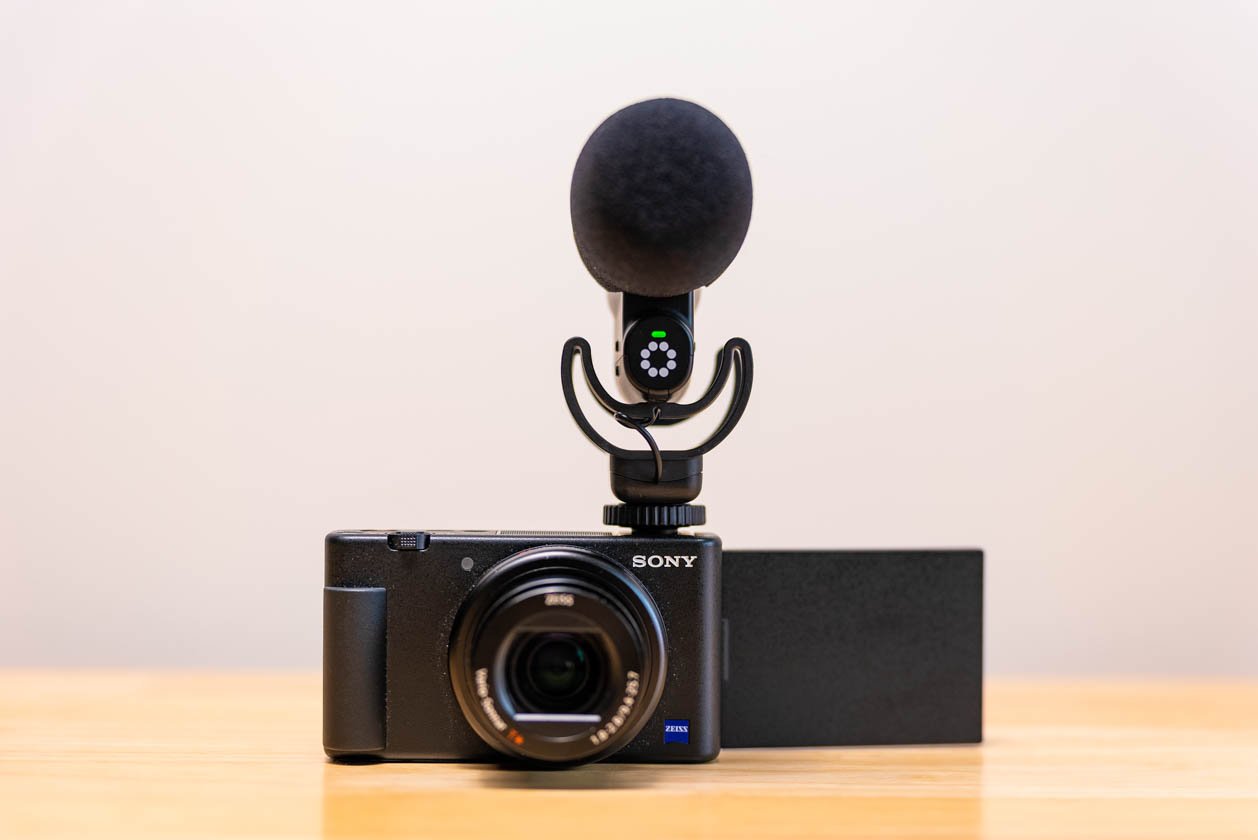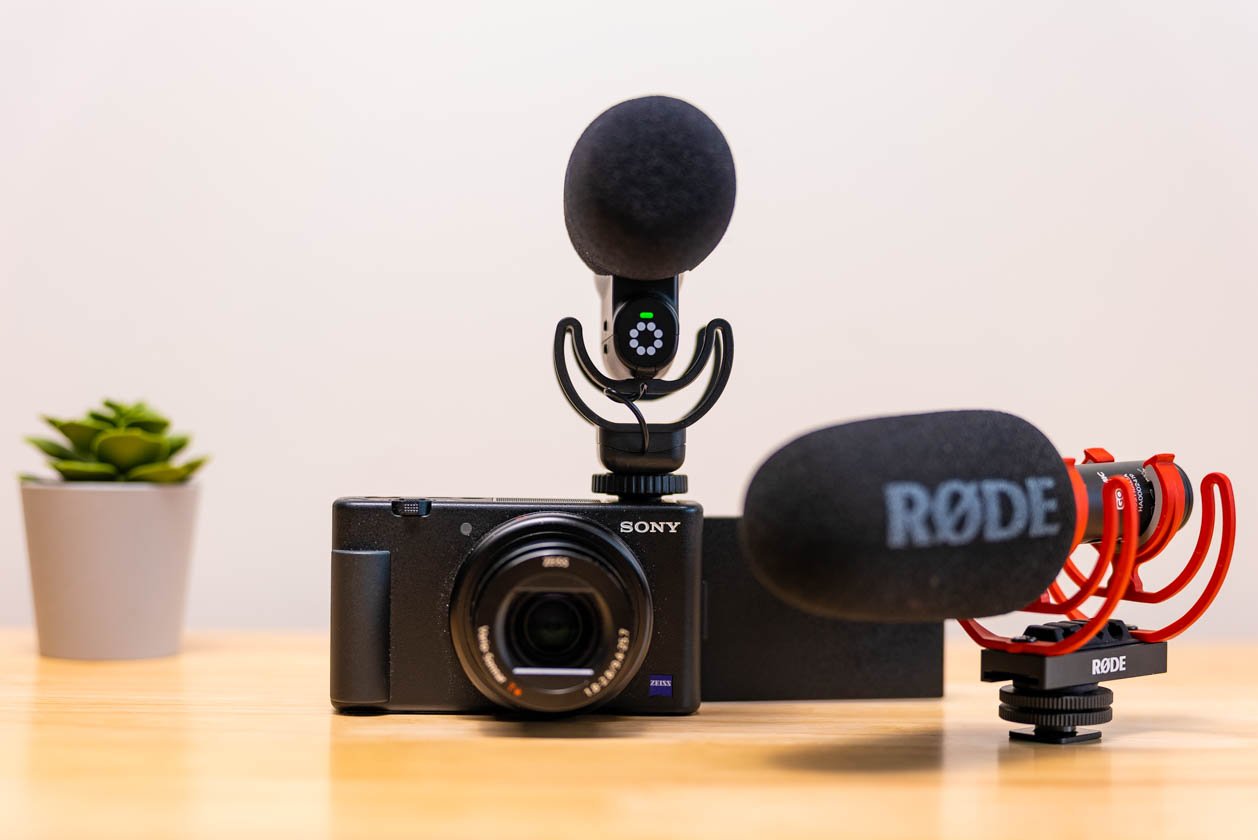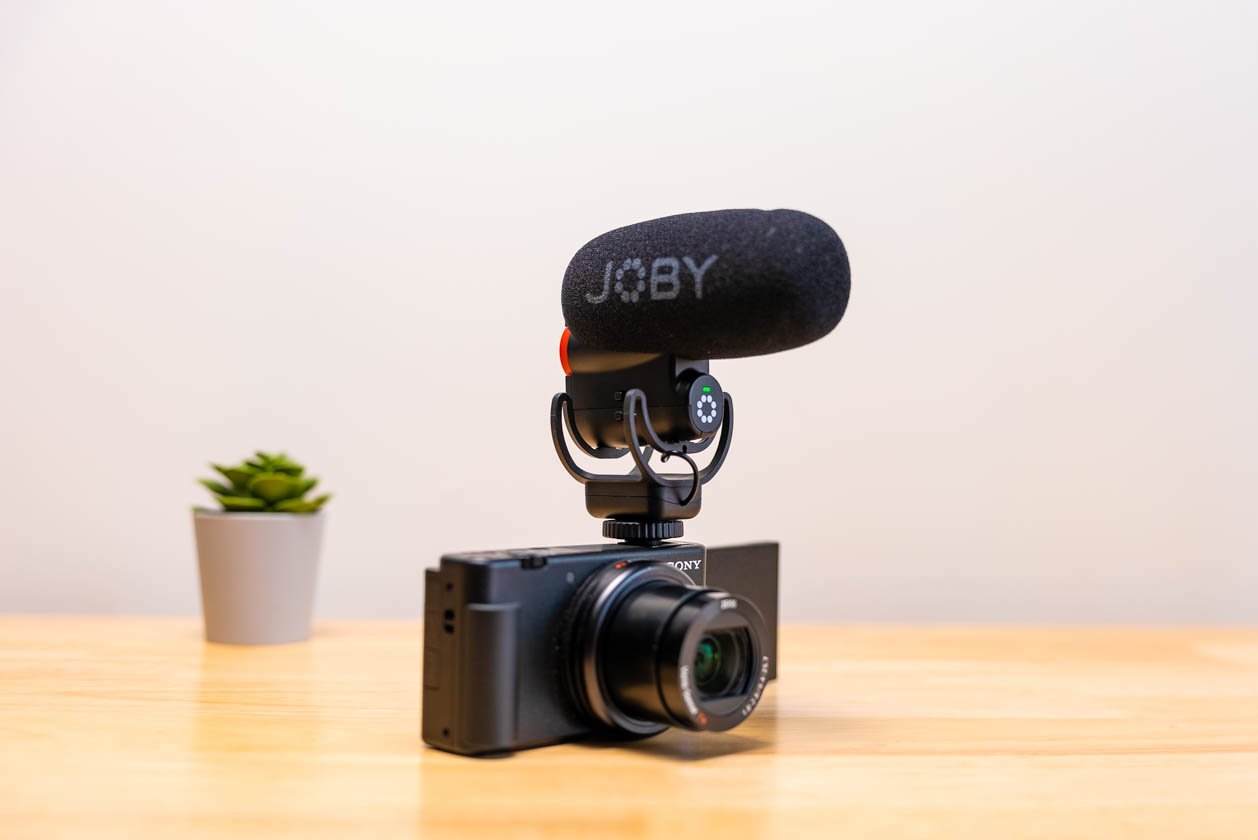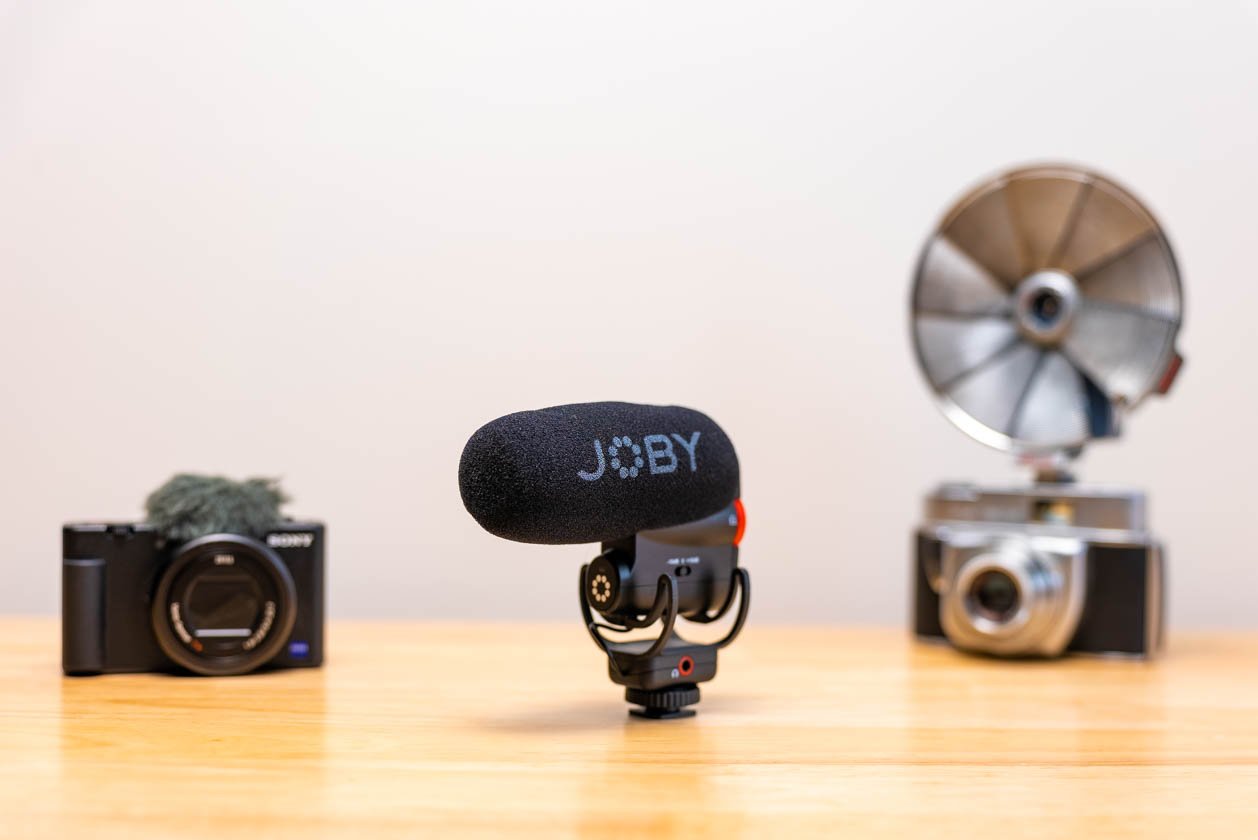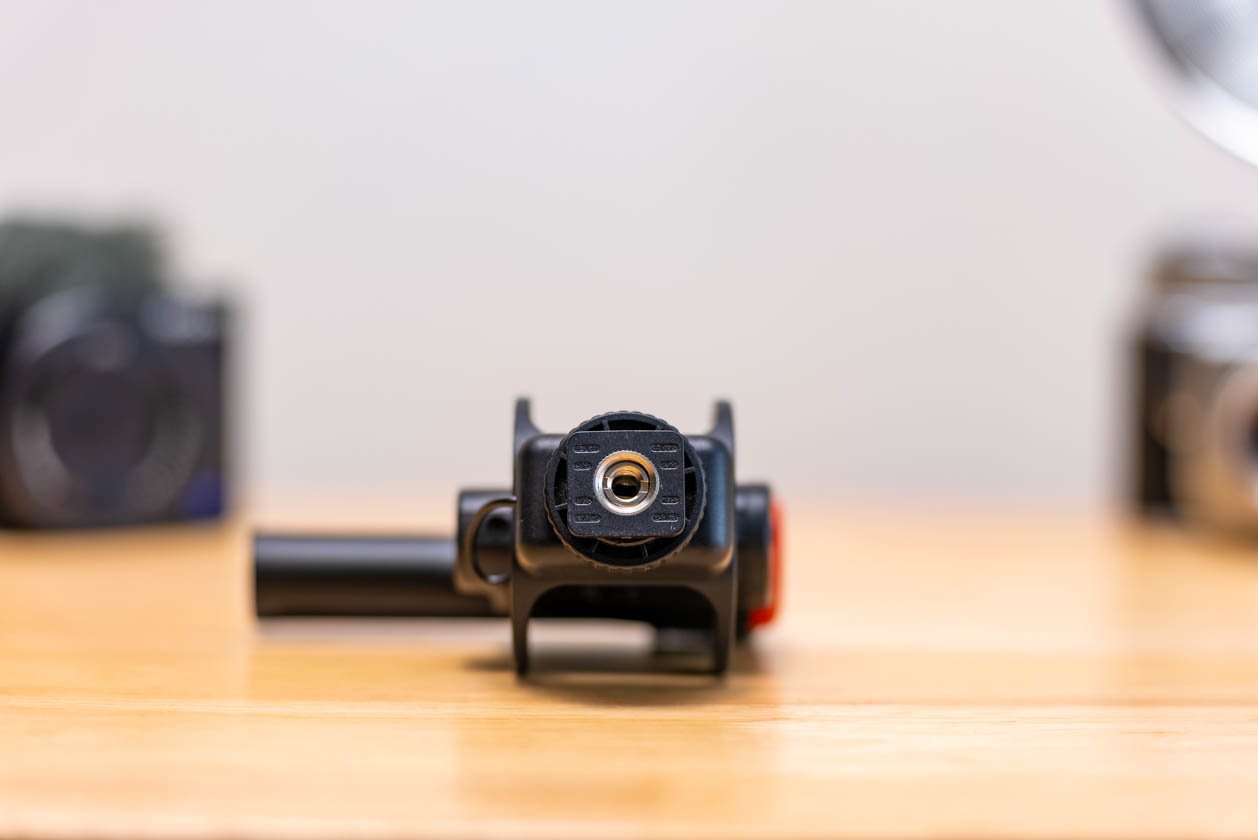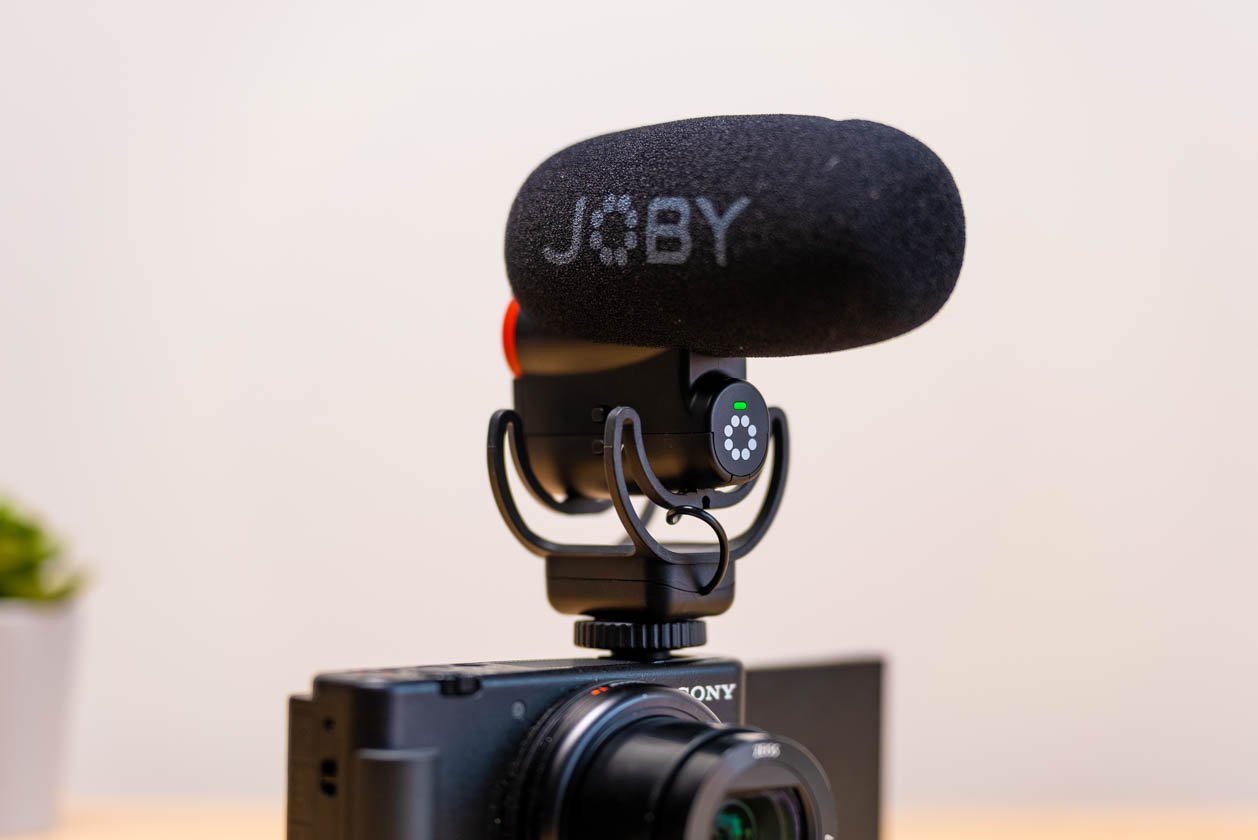Joby Wavo Plus | Is it Worth $200?
For content creators who want physical controls for processing and monitoring audio levels, the Wavo Plus might be worth the premium. Compared to the RODE VideoMic GO II, the Wavo Plus is a better all-in-one shotgun microphone, especially if you want a more plug-and-play experience.
| Pros | Cons |
|---|---|
| ✔ 3.5mm Audio Mointoring | Needs to be charged |
| ✔ Low-cut filter helps with wind | Expensive |
| ✔ More physical controls | Sensitive to touches on body |
Specs
| Capsule | Condenser Electret (line gradient) |
| Polar Pattern | Super Cardioid |
| Frequency Response | 20Hz - 20kHZ |
| Sensitivity | -16 dBV/Pa at 1 kHz (+-3db) |
| High-Pass Filter | 100 hz |
| Gain Adjustment | -10, 0, +15dB |
| Output | 3.5mm TRS and TRRS |
| Battery Life | 30 hrs |
| Dimension | 11.5 x 5.8 x 11.2 cm |
| Mount | 1/4″ screw, 3/8" universal mount, Cold-shoe |
Expensive, but justified… for some
The JOBY Wavo Plus is a powerful and versatile microphone designed for creators seeking high-quality audio with ease. For our review we simulated an outdoor vlog during a day trip to Randall’s Island.
It's worth noting that the Wavo Plus is priced higher compared to some competitors, such as the RODE VideoMic GO II we reviewed last year. While the RODE delivers similar sound quality in ideal conditions, the Wavo Plus begins to justify its higher price point for users who frequently record outdoors or who need physical controls for making quick changes on the go. Follow along with our video to hear a side-by-side comparison to the VideoMic GO II.
Design & Features
On the left side of the JOBY Wavo Plus, there is a slider switch that allows you to adjust the output gain directly from the microphone itself, without relying on your phone or camera settings. This feature offers greater control over the audio levels during recording. The switch has three positions: center (0 effect), -10dB, and +15dB, enabling you to adapt the gain according to the specific recording situation.
Below that, located under its shock mount, is a built-in 3.5mm headphone jack which enables real-time audio monitoring. This allows you to listen to the audio as it's being recorded, ensuring that any unwanted background noises or issues can be identified and addressed immediately, rather than discovering them later during post-production. Although its not intended for it, you can alternatively use this as a secondary output if you want a backup recording.
On the opposite side, you'll find two slider switches. The top switch controls the Safe Track feature, which limits the audio to -10dB on the right channel. This is especially useful if you encounter audio distortion due to high levels. With Safe Track enabled, the right channel can be utilized, ensuring usable audio even in challenging recording conditions.
Below the Safe Track switch, there is a Low-Cut filter switch. Activating this switch helps to reduce and level out background noises like traffic or air conditioner noise, resulting in cleaner and more focused audio.
The mount itself is versatile, offering both a cold shoe mount and a threaded tripod socket. This flexibility gives you two options for mounting the microphone, either directly on a camera or on a tripod, depending on your shooting setup and preferences.
The front of the microphone features a power/battery level LED indicator. The LED changes color to provide a visual indication of the battery status, with green indicating a high battery level (100-30%), amber indicating a medium battery level (30-10%), and red indicating a low battery level (10-0%). This feature helps you quickly check if the microphone is on and also keep track of the battery life during recording sessions.
Moving to the back of the JOBY Wavo Plus, you'll find the power button, a prominent red headphone volume knob, a USB-C port for charging the microphone or connecting it to a computer, and audio output to the camera jack.
The power button allows you to manually turn the microphone on or off. The JOBY will automatically turn itself on when it detects a 3.5mm connection. This is especially useful to help users avoid accidentally leaving the microphone off during a recording session… we’ve all been there. The headphone volume knob provides separate control over the headphone monitoring level. You can use the USB-C port as a digital input with computers or mobile devices, allowing you to quickly upgrade your recording setup with minimal effort.
How does it Compare to the VideoMic GO II?
When it comes to audio performance, the Wavo Plus sounds nearly identical to the VideoMic GO II in controlled environments, though we did notice that the JOBY has a slightly warmer tone. Where the JOBY begins to show its strength is when the wind kicks in. With its 100Hz high-pass filter, it can more effectively reduce low-frequency noise, helping users better capture clean and crisp audio outdoors. During our tests, there was a significant improvement with the high-pass filter enabled on the JOBY. Although the RODE also has a high-pass filter, it is set to 75Hz. In addition to not being as effective, the bigger downside is that the VideoMic GO II needs to first be connected to a computer or mobile device running RØDE Central app in order to activate the high-pass filter, adjust the input gain for the microphone as well as employ more advanced features like a high-frequency boost.
Both shotgun microphones are compact in size, though depending on your camera or accessory bag, one might be more convenient to pack than the other. The Wavo Plus measures 11.5 x 5.8 x 11.2 cm. It is noticeably taller than the RODE Video Mic GO II, but it manages to less wide and less thick. One downside with its design, though, is that its shock mount is non-removable whereas the RODE can be used with just its capsule if you want.
While the JOBY can still struggle with stronger wind, it has a noticeably lower noise floor with its high-pass filter enabled. Our voice becomes slightly more flat as a result of the lower frequencies being eliminated, however, the clips we recorded were much more usable.
Another strength for the JOBY is that users can quickly toggle that -10db safety track as needed whereas this is an exclusive feature on RODE’s more expensive microphones like the VideoMic Pro+ and VideoMic NTG, though it still relies on connecting to the RØDE Central app first. If audio levels suddenly become too loud, JOBY has the upper hand and can help ensure that clipping is avoided.
Who is this For?
The Joby Wavo Plus is a premium shotgun microphone that offers a range of physical controls and features that set it apart from other options like the RODE VideoMic GO II. Although it comes at a higher price point, the Wavo Plus justifies the extra cost with its added convenience and functionality. While the RODE VideoMic GO II may sound nearly identical in ideal conditions, the Wavo Plus shines with its physical controls. Instead of relying on a connected app, the Wavo Plus allows you to easily toggle the low-cut filter on or off with a dedicated button. This hands-on control can be a significant advantage in the field.
The option to record a -10db safety track is perhaps the best stand-out feature of the Wavo Plus. This is particularly valuable when recording in uncontrolled environments, as it can prevent audio clipping and provide a safety net for recovering audio levels in post-production. Beyond that, the Wavo Plus offers a 3.5mm audio monitoring output with a dedicated volume control which is especially beneficial for professional setups, as it allows for easier and more precise level monitoring without requiring additional hardware. While the Wavo Plus may have fewer software-based features than some competitors, it remains a reliable choice for users who prioritize compactness, convenience, and dedicated physical controls in a shotgun microphone.
Overall, if you're in need of a high-quality shotgun microphone with extensive physical controls and the ability to capture reliable audio in various environments, the Joby Wavo Plus is a worthwhile investment despite its higher price point compared to alternatives like the RODE VideoMic GO II.
